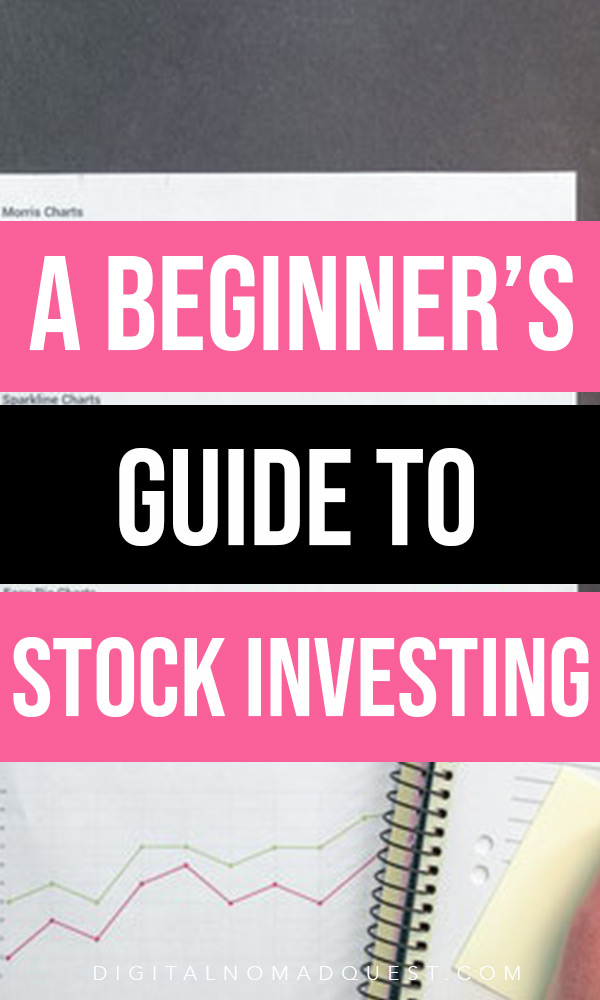So you’re thinking about joining the millions of people worldwide who invest in the stock market. For a total beginner, it can seem like a daunting or even unachievable task reserved exclusively for the super wealthy or Wall Street brokers but fear not – you don’t need to be a Rockefeller or a financial guru to start growing your wealth through investing in the stock market. Before you commit though, it’s probably worth addressing a few crucial questions.
A Beginner’s Guide to Investing in the Stock Market
What is the stock market and how will I make money?
Apologies if you already know this but, in a nutshell, the stock market is made up of a number of public markets that allow investors to buy small fractions of companies, otherwise known as stocks or equities. It’s great for companies as these investments provide instant access to capital to help them grow. In turn, this financial growth allows the shareholder (the owner of the stock), to reap the rewards of dividends (annual profits) or sell their company stock at a profit.

Why should I invest?
People invest in the stock market for all kinds of reasons – saving for real estate, pensions or paying education fees are all common motivating factors. You’ll have your own financial targets and investing in stocks can help you achieve them.
How long does it take for my investment to become profitable?
Financial growth takes time and you can’t expect your equity to produce massive gains overnight. The sooner you enter the game; the more time you have to accumulate a compound return on your investment.
What is the best way to invest as a beginner?
This is a really important question. Understanding the methodology is key, particularly for a first time investor. There’s a variety of tools out there to assist you in gathering knowledge of the stock market and eventually influence your decision making. Here’s a rundown of the steps you’ll need to take on your journey to becoming an investor:
Do your research.
As with learning anything new, it’s a good idea to do some homework and get a basic, background understanding of the world you’re about to enter. With a stock market simulation app, you’ll be given an amount of virtual cash allowing you to make digital investments in markets that duplicate real world stock exchanges. Using a simulation is a great way to familiarize yourself with financial jargon and trade with actual market data straight from your smartphone without risking your own money. Here’s a list of awesome stock market simulators for iPhone and Android to sink your teeth into:
- Stock trainer: Virtual Trading
- Best Brokers
- Boneapps: Stock Exchange Game
- Investing Game – Forex for Beginners
- The Game of Stocks
Decide what kind of investor you’d like to become.
Active Investing
If you’re the kind of person who wants to stay in control of your investments, then actively trading is perhaps the best option for you. To become an active trader, you’ll need to follow these steps:
- Choose a stockbroker.
It’s essential to find and choose a stockbroker that suits you – Brokerchooser is a great place to start. With a little bit of information from you, Brokerchooser will assist you in your search and make recommendations based on value for money and the general nature of the trading experience for the user. They offer a number of search criteria (for example, ‘best brokers for beginners’ and ‘best discount brokers) so you’re able to find a suitable service tailored towards your best interests with relative ease. - Make your online investment account.
This is fairly straightforward. Essentially your account will provide a secure space for your shares, just as your bank account acts as a space for you to safely deposit money. You’ll need to fill out a few forms and submit some identification to prove who you are and within a few working days you’re application will be processed and you’ll almost be ready to start buying. - Add money to your online investment account.
Again, this is something you’ll be able to do with relative ease. Choose how much money you want to bring to the table and upload it through a bank transfer. - Choose which stocks you want to buy.
OK, this is where things get a little bit trickier. It’s going to take precious time to decide on a first investment. If you’ve tracked the markets for a while with simulators and done your homework then you may have a good idea of where to begin, but it’s still a different ball game when investing in the real world than with virtual money. If you’ve got some savvy friends working in the financial sector who can drop you some tips, you’re going to be at an advantage, otherwise it’s going to come down to a combination of research and intuition. - Get down to business – buying, watching and reviewing.
So, after all those hours of independent research, that big tip-off from a financial guru friend or both, you’re ready to buy. Simply purchase the shares online through your broker for the amount that you want to spend and that’s it, they’re yours. Now it’s crucial that you watch the market and react accordingly to their changes. If you’re playing the long game then you can sit on the shares and wait for the annual pay-out in dividends or, if the opportune moment arises, you can sell your shares for a profit to other investors. Don’t forget, you’ll need to review and check regularly so as not to miss that big break.

Inactive investing
Perhaps the methodology of becoming an active investor sounds like a bit too much hassle. No problem, there’s a few simple ways to get into trading without all of that rigmarole.
Robo Advisors
Effectively, this is online investing simplified. On top of being a nice introduction to the stock market, using a robo advisor is a great way to invest due to the fact that you are in control of a number of variables, the combination of which will determine your overlying investment strategy. These variables are as follows:
- Risk
You’re free to choose low, medium or high risk investments. Obviously the amount of money you’re working with is going to impact the level of risk you’re willing to deploy. - Timeframe
Selecting long term or short term returns will effect the investment choices.
With these self-chosen criteria, the robo advisor will generate an algorithm that selects a bespoke collection of shares for you, otherwise known as in index fund or a mutual fund. Because it’s a selection, rather than individual shares, there’s a higher degree of security and a stronger chance of turning a profit.
As to be expected, there are fees when using the service of a robo advisor, but when compared to how much you might have spent years ago, pre-digital revolution, on a human financial advisor, it pales into insignificance. Robo advisor management fees are generally around the 0.25% mark but this can increase depending on the extent of advice and service that you acquire. Here’s a list of the best robo advisors available right now:
- Wealthfront
They provide tailored investment automatically with no phone calls or emails, everything is managed through their app. Check them out here. - Betterment
Betterment is fiduciary meaning that all investment strategy is undertaken with the best intentions of their clients. With Betterment, the first year of membership comes without any membership fees, providing the value of your initial deposit qualifies. - SoFi
Arguably the best service for low cost investors – you can join with as little as $1 and
they provide personalized financial planning as well as great discounts from their partners through their membership scheme. Get more information about SoFi.
Micro Investing
Essentially, micro investing is the digital equivalent of saving your spare change, but unlike a jar of coins, these platforms will allow you to make small gains on your cash. If you’re looking to invest with minimal effort and minimal funds, then perhaps micro investing is a good avenue to explore. The world is changing and investing is becoming largely accessible even if you don’t have a huge reserve of savings to spend and through micro investing services, you can safely invest while attaining trading experience to use in the future. There are a number of digital micro investment services out there for you to use today.
- Robinhood
The aim of Robinhood is to make investing accessible to everyone and, in their own words, ‘democratize our financial system’. Robinhood allows users to make investments in global companies, commission free, with as little as $1. Get more information here. - Public
Imagine an app combining stock trading and social media and you’d probably end up with something similar to Public. Like Robinhood, Public is a trading platform that allows you low stakes entry to the stock market with zero commission but its social community will help you follow the advice of other users when making those all important decisions. You can also gain rewards through referrals which is pretty neat. - Acorns
By syncing Acorns to your bank you can opt into automatic round-ups. Basically this means that any purchases you make with your credit card get rounded up to the nearest dollar and that spare change goes towards your in-app investments. It’s a great means for those who want to invest passively at a low risk and low cost.
Final Thoughts
If you want to learn how to trade on the stock market seriously, it’s going to take time, dedication and patience. It’s comparable to learning to play a musical instrument – some people are naturally gifted but for others it can take months, years even to become proficient. Luckily there are developers and economists out there trying to level the playing field and transform the stock market into something accessible and trouble-free. Before embarking on your trading journey, make sure you have a strategy – think long term vs short term, high risk vs low risk. Secondly, ensure you’re well advised and have researched all of the options available to you in order to find the most suitable method, but most importantly, have fun with it.


